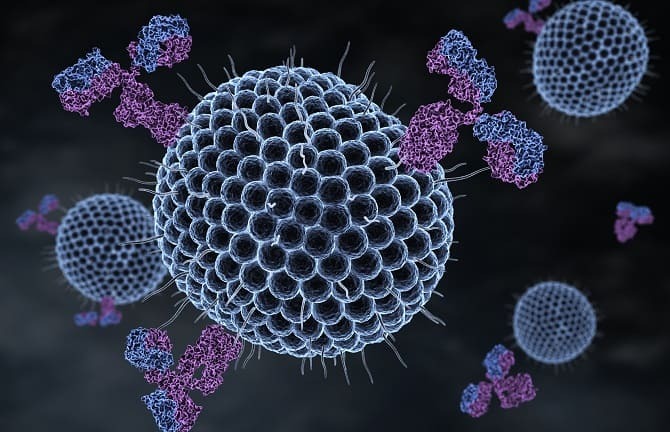
 Data Structure
Data Structure Networking
Networking RDBMS
RDBMS Operating System
Operating System Java
Java MS Excel
MS Excel iOS
iOS HTML
HTML CSS
CSS Android
Android Python
Python C Programming
C Programming C++
C++ C#
C# MongoDB
MongoDB MySQL
MySQL Javascript
Javascript PHP
PHP
- Selected Reading
- UPSC IAS Exams Notes
- Developer's Best Practices
- Questions and Answers
- Effective Resume Writing
- HR Interview Questions
- Computer Glossary
- Who is Who
What is the full form of CMV?
Introduction
Cytomegalovirus (CMV) belongs to the herpes viral family, Herpesviridae or Human Herpesvirus-5 (HHV-5)/b>. It is a widespread double-stranded DNA virus that mostly affects salivary glands. It is 60-70% present in adults in developed countries and almost 100% in developing countries.

Though it normally does not cause serious harm, it can be life-threatening if present since birth in babies which is the case of Congenital CMV. It remains in a dormant state in the host for the whole life after infection. It is controlled by the immune system of the host which is why it remains unrecognizable for a lifetime.
Causes and Transmission of CMV
As it is an infection, the causes of CMV include weakened immunity and infection from the mother. CMV infection is a highly contagious infection that can spread from one infected person to another healthy person through
Direct contact with body fluids like saliva and urine especially from young children or babies
Sexual contact
Blood transfusion and transplanted organs
Breast milk of infected mother to nursing infants
Symptoms and Diagnosis of CMV Infection
The symptoms of CMV infections range from asymptomatic to severely affecting organ functions in immunocompromised persons.
In healthy individuals, few visible symptoms are sore throat, fever, fatigue, and swollen glands, whereas, in immunocompromised individuals, the symptoms may be seriously affecting the eyes (retinitis), lungs (dry cough), stomach, liver (jaundice and hepatitis) and intestine. It can also cause mononucleosis.
In Congenital Cytomegaloviral infection, the baby can show premature delivery, microcephaly, retarded growth, jaundice due to affected liver, pneumonia, swollen spleen, and liver. The baby might have hearing loss detectable at birth or may develop in childhood later.
The diagnosis of a CMV infection can be done in the following ways
Blood and Urine Test In infected adults, blood tests can be done which include antibody (IgM and IgG) testing, CMV antigen presence, virus culture, or PCR. However, newborn babies are tested for saliva or urine as blood is not the best fluid for their testing.
Biopsy It is done to study tissue samples of the intestine, esophagus, or lungs of an infected person.
Eye test It is done to check inflammation in the retina (retinitis).
Imaging test Test like CT Scan is done sometime to check changes in the brain or lungs.
Treatment and Prevention of CMV
CMV infection does not need any major treatment. In the case of healthy persons who are asymptomatic also, the body's immune system will cure it within 3 weeks.
In the case of symptomatic individuals, newborns, or who are immunocompromised, the treatment is done using antiviral medication such as cidofovir, ganciclovir, foscarnet, or Valganciclovir along with the symptomatic treatment to relieve symptoms associated with it.

However, antiviral therapy has major side effects such as toxicity, so it should be used by taking all the parameters in mind. In the case of organ transplant or blood transfusion from an infected donor to a healthy recipient, prophylactic treatment is done with ganciclovir or valganciclovir to prevent life-threatening infection.
Though it is an opportunistic viral infection, it can only be prevented by avoiding close contact and checking for CMV infection before a blood transfusion or organ transplant.
Conclusion
Cytomegalovirus or CMV, a common wide-spread virus, is a member of the Herpesviridae viral family. It can cause a contagious viral infection called CMV infection which usually does not show major problems and is asymptomatic. Once a person is infected, it remains throughout life in a dormant state. However, in case of reactivation or weakened immunity, the treatment is done throughout life to prevent any complications. The newborns are more prone to infection due to their mother's infection during pregnancy and can show major symptoms of affected growth and development.
FAQs
Q1. What is mononucleosis?
Ans: Mononucleosis is a common infectious disease caused by Epstein-Barr, a type of herpes virus. It is often called kissing disease because it is usually spread through saliva while kissing or sharing drinks.
Q2. What are the symptoms of CMV in an HIV-infected person?
Ans: If a person is already infected with HIV, he won't get sick with CMV unless his CD4 count drops below 100. However, it may affect various parts of the body and show the following symptoms
Blind spots or floater, blurry vision or blindness
Abdominal and lower back pain
Confusion
Diarrhea
Painful swallowing due to ulcers in the esophagus or mouth
Weight loss
Fatigue and weakness in legs
Q3. What is NK activity?
Ans: Natural killer (NK) cells are the lymphocytes that provide innate immunity by killing the infecting virus. Bolstering natural killer cell activity suppresses the CMV infection also.

